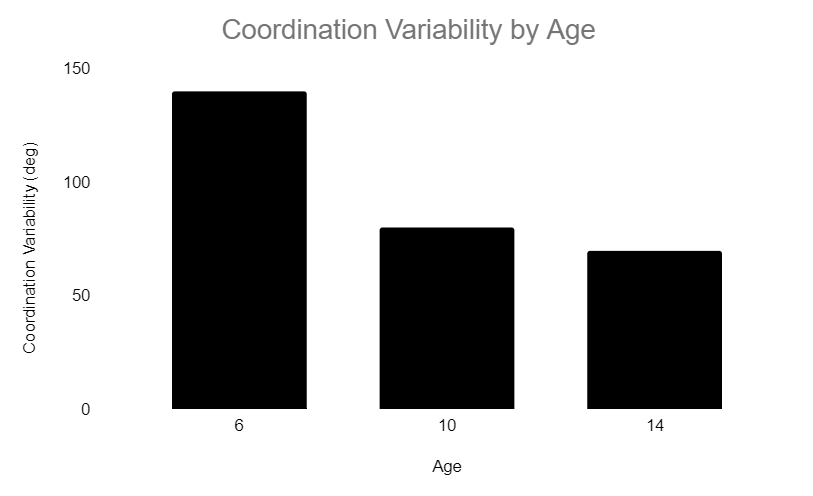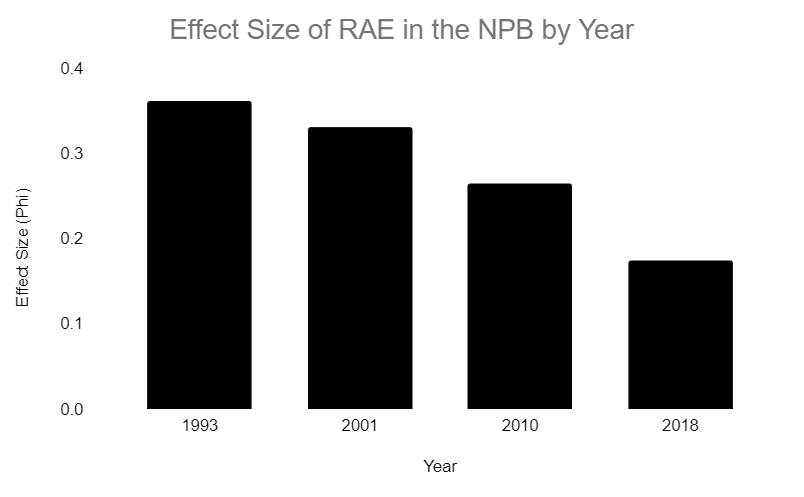Caught Looking: Articles of the Week — Oct. 22

Here are three studies the R&D department at Driveline read this week:
Movement Form of the Overarm Throw for Children at 6, 10, and 14 Years of Age
A few weeks ago, in the 8/27 edition of Caught Looking, we discussed a motor learning study from Dr. Rob Gray at Arizona State University. This study looked into the idea of “freezing” and “freeing” degrees of freedom when learning a task. Basically, this is just the idea that we simplify new tasks by disabling certain joint movements when we are learning them to coordinate a solution to the task easier. As we become better at the task, we begin to “free” those disabled joint movements since we can afford for the task to become a bit more complex to create more optimal task solutions.
Palmer et al. investigated this theory in addition to a few other learning theories and paradigms that have been proposed for overhand throwing. This study used 3D motion capture to compare the overhand throwing mechanics of six participants in each of three age groups: six years old, 10 years old, and 14 years old. The groups’ throwing mechanics were compared to measure how throwing mechanics change as a function of age to compare to a similar study looking into how adults learn to throw with their non-dominant hand.
There were three measurement types used to compare mechanics and coordination between age groups:
- The degree to which each of the groups coordinated the movement of their center of mass and their wrist
- A subjective analysis of feet, trunk, humerus, and forearm mechanics throughout the throw
- The total range of motion throughout the throw
Based on these measures of throwing mechanics, there were changes observed as a function of age. Those were:
- Center-of-mass (CoM) and wrist coordination complexity increased with age, and this coordination variability decreased with age. Meaning, older participants used more complex coordination between the CoM-wrist coordination when throwing but were more consistent with this coordination between throws.
- Subjective mechanical proficiency improved with age, though the 14-year-olds did not reach the maximum skill level
- Range of motion (ROM) differences were found between age groups at the ankle, knee, hip, shoulder, elbow, and wrist joints but trends were not uniform (e.g., ankle ROM increased with age while shoulder ROM decreased with age)

On the other hand, it does provide some additional evidence toward the theory of freezing and freeing degrees of freedom while learning new tasks, which, as mentioned in the discussion of Gray’s study, can absolutely be used for training high school, college, and even potentially professional overhand-throwing athletes. Freezing and freeing degrees of freedom in training can be done using constraints and conditions of practice.
Relative Age Effects in Male Japanese Professional Athletes: a 25-Year Historical Analysis
This study discusses the relative age effect (RAE) among baseball players and other athletes in Japan—on a different side of the coin that we at Driveline are currently working on.
Why is that the other side of the coin? Because it is innate—we can’t change an athlete’s birth date and the subsequent advantage or disadvantage they have accumulated throughout their sporting career based on where their birth date falls on their sports calendar. The relative age effect is the observation that has been made in various sports for years now, describing the bias in the distributions of birth dates among players of the same sporting age.
For example, the cutoff for age groups in Canadian Hockey is the New Year, so there is a biased distribution of elite hockey players in Canada toward the early months of the year. Sasano et al. looked at this relative age effect in Japanese athletes of multiple sports (N = 7805 total athletes) and compared the effect between four years: 1993, 2001, 2010, and 2018. They found that the magnitude of this effect (the amount of bias) decreased over time in soccer, baseball, and volleyball—but not in basketball.

If this is the case, it is very interesting that the RAE’s magnitude is on the decline in certain sports because it could mean player development is becoming more robust. The authors of this paper propose a couple of different mechanisms leading to a decrease in RAEs over time, including sports participation, but there seems to be a possible alternative explanation in player development.
If more athletes have access to quality coaching, player development tools, and knowledge, maybe this could be partially explaining the decrease in the RAE bias—this is player development overcoming the advantage given to those born just after athletic age cutoff dates. Additionally, it could be a function of coaches and parents becoming more focused on training than other motivations such as winning or competing in tournaments.
Whatever the mechanism for a decrease in the relative age effect and any other innate or given advantages, it serves as a target for player development techniques to overcome. A great measure of success for player development initiatives would be to effectively improve athletes’ skills enough to overshadow any advantage one has over the other based on an unchangeable factor such as birth date.
More than a Metric: How Training Load is Used in Elite Sport for Athlete Management
In the last edition of Caught Looking, we reviewed a piece about monitoring workload in baseball. Running the risk of overloading you all with workload management discussion, here we feature another editorial about monitoring training load in a general sense for sports. West et al. do a good job in this document framing workload as a tool not necessarily a tool for eliminating all injuries or perfecting every training program, but as a more general tool for more broad use. This use is context.
Five ways in which training load can provide information are described in this paper including: feedback, in-session adjustment, day-to-day planning, season planning, and long-term use. An example of each follows:
- Feedback: did this training session meet the training target relative to the demands of in-game competition?
- In-session adjustment: does this athlete need to be pushed harder or relaxed on the training load?
- Day-to-day planning: is the athlete progressing to the next phase or program?
- Season planning: identifying periods of increased or decreased load to help adjust any training or activity
- Long-term use: building a history of training load and adjusting the overall load on the athlete based on age and other environmental factors over time
The main takeaway from this article—which I think really hits home with the way that workload and Motus should be used for throwing training—is that we don’t expect a perfect prediction of whether or not somebody is going to get hurt. We don’t expect a perfect prediction of whether an athlete is going to gain 2 mph on his fastball within 6 weeks or not.
We do, however, expect it to provide us with the context of training that we wouldn’t otherwise have. That can help us make informed adjustments within-career, within-season, within-training sessions, and within-activity based on more information than a standard and static template.
Monitoring training and workload is not a replacement for athlete management as we know it. Workload and training monitoring is an augmentation to traditional athlete management and coaching to help improve our understanding of how to make athletes better. For our latest workload blog framed around the needs of a professional relief pitcher, click here.
Comment section